"It ain't ogre – till it's ogre," reads the poster-tagline for the fourth and apparently final Shrek movie. You'll have seen what they did there: pun playfully on "ogre" and "over" while worryingly keeping in reserve the tiny possibility that it may not be, in fact, over. This fourth Shrek film might conceivably be greeted with boffo box office and the multitudinous shifting of units. So could it be that Shrek will next year show up in his Sean Connery '83 vintage wig, announcing: Never Say Never Again?
Shrek Forever After, in 3D, is a good-natured family comedy, an adventure conducted at a rather leisurely pace. The end of the franchise road seems to have taken the pressure off, inducing a relaxed feel, reminding you pleasantly, if faintly, what was so great about the first film. There is loads and loads of the flying and swooping through the air that is now de rigueur for 3D. I admit my gentle, feelgood buzz on leaving the cinema was rather premised on the assumption that the Shrek-pipeline is now empty, but it's an enjoyable film nonetheless and a nice way for the series to finish.
Shrek Forever After is based on the Capraesque concept of Shrek (voiced by Mike Myers) being bored and frustrated as a married ogre and, more pertinently, an ex-celebrity. He's yearning for a different existence. Dealing with the kids is a chore and a bore. He's taking for granted the luxuries of a loving princess-ogre-wife and a happy home and feels emasculated by the fact that no one is scared of him nowadays and fans just want him to "do the roar".
Shrek has a kind of ogre-menopausal breakdown at a chaotic kids' party; he rows grumpily with Fiona (Cameron Diaz) – Shrek fans will recognise their tiffs as a narrative staple of the series – and stomps off on his own, encountering the sinister and Mephistophelean figure of Rumpelstiltskin, who offers him his old bachelor life back in exchange for cancelling just one day of his earlier existence. Some new backstory inserted (a little confusingly) at the beginning of the movie has already revealed that Rumpelstiltskin had also offered a Faustian bargain to Fiona's royal parents (John Cleese and Julie Andrews) when the princess was still caged in the tower – her freedom in exchange for giving him unfettered power over their kingdom – but Shrek's rescue of Fiona came on that momentous day, just before the sulphurous bargain could be contracted.
Shrek is now tricked into a similar deal, which plunges us into an alternative reality. He is single and lonely, living under Rumpelstiltskin's tyrannical rule; Donkey (Eddie Murphy) doesn't know him; Puss-in-Boots (Antonio Banderas) has run amusingly to fat and Fiona is a complete stranger, a warrior queen leading an underground ogres' resistance movement. Rumpelstiltskin is voiced by Walt Dohrn, the animator and story artist on the last two Shrek movies, who has here been allowed to play a major character – an in-house indulgence that seems part of the general end-of-term feeling. There's plenty of fun to be had and Rumpelstiltskin is an entertaining baddie, demanding his flunkies lay out wigs to match his various moods – his "angry" wig gives him a disturbing, troll-like appearance, like the Chucky doll in the Child's Play horror films.
How strange, though, to compare this reasonable piece of entertainment with the sensational impact of that first Shrek film, way back in 2001, an aeon in movie-trend terms. Now 3D isn't causing half the excitement of the next-generation digital animation showcased in that movie. How we gasped at the technical achievement of those individually visible blades of grass, rippling across vast meadows and plains. And Mike Myers himself was a serious player, Austin Powers and even Wayne's World were still successes in living memory, and to hear his Scottish accent – such a minor weapon in Myers's comic armoury – was a novelty. Now, Shrek could well come to be seen as Myers's chief professional achievement. And it's strange to remember how very daring Shrek 1 seemed at the time: the implied obscenity in Lord Farquaad, the cheeky attack on the Disney empire.
Well, the subversion and attitude have pretty much disappeared now. Shrek got the sequels; so did Ice Age. But no sequels for Finding Nemo or The Incredibles, two of the most glorious animations of the noughties. Go figure. Soon it will be time for Toy Story 3, and time to reassess that remarkable movie series, and to reassess the fact that we might be coming to a full-stop in this very exciting animation wave. It's difficult to see what is coming next, though 3D refinements may well offer fresh sensory thrills. Meanwhile, Shrek is bowing out, having triggered – in its first two movies, anyway – a terrific new surge of excitement in animation, a marrying of technical brilliance with traditional wit, flair and old-fashioned heart. It's a pleasing note to end on. But please, let it be the end.
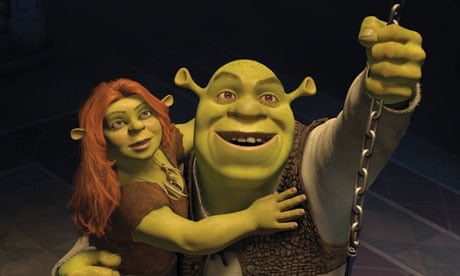
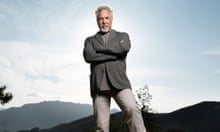
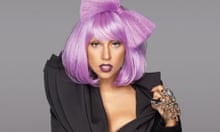
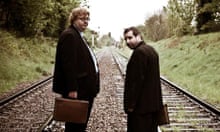
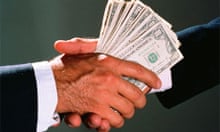


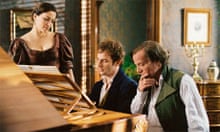
Comments (…)
Sign in or create your Guardian account to join the discussion